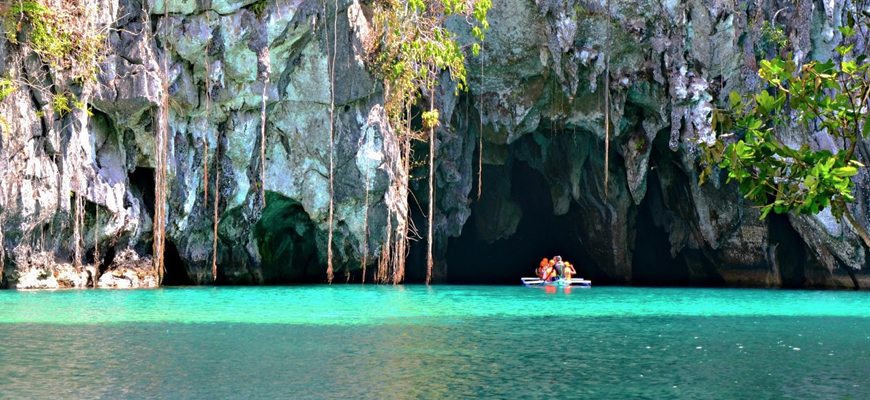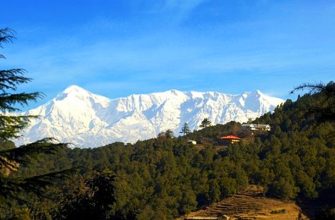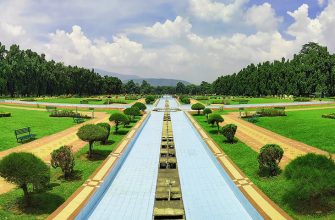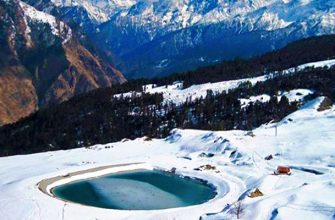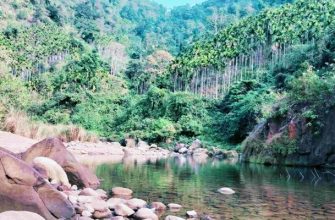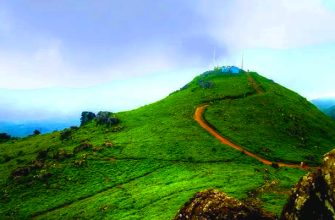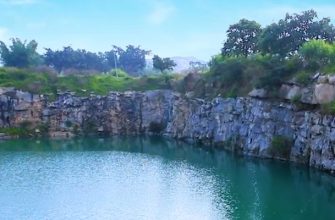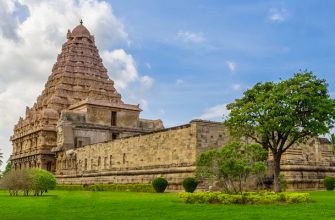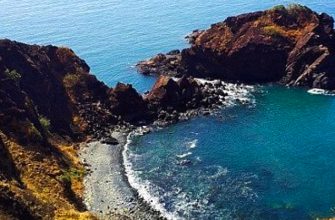The Puerto Princesa Subterranean River National Park is located around 50 kilometers north of the city of Puerto Princesa, Palawan, Philippines. The National Park is located in the Saint Paul Mountain Range on the northern coast of the island. It is bordered by St. Paul Bay to the north and the Babuyan River to the east. The City Government of Puerto Princesa has managed the National Park since 1992. It is also known as St. Paul’s Subterranean River National Park, or St. Paul Underground River. The entrance to the Subterranean River is a short hike from the town of Sabang. Puerto Princesa Subterranean River National Park has been nominate for the “New Seven Wonders of Nature” competition.The park has a limestone karst mountain landscape with an 8.2 kilometer navigable underground river. A distinguishing feature of the river is that it winds through a cave before flowing directly into the South China Sea. It includes major formations of stalactites and stalagmites, & several large chambers. The lower portion of the river is subject to tidal influences. Until the 2007 discovery of an underground river in Mexico’s Yucatan Peninsula, the Puerto Princesa Subterranean River was reputed to be the world’s longest underground river.The area also represents a habitat for biodiversity conservation. The site contains a full mountain-to-the-sea ecosystem & has some of the most important forests in Asia. It was inscribed by UNESCO as a World Heritage Site on December 4, 1999.
The beaches of Palawan topped the list of the best beaches of Asia identified by the prestigious international magazine Condé Nast Traveler in its October 2007 issue.
The New York-based magazine, published by Condé Nast Publications, the same company that owns the New Yorker, Vogue, Glamour, and Bon Appetit, listed Palawan beaches ahead of other spectacular Asian destinations such as Beach No. 7 at Havelock Island in India; Nihiwatu Beach on Sumba Island in Indonesia; Baa on North Ari and North Malé Atolls in the Maldives; and Laem Tong Bay on Koh Phi Phi in Thailand. tourist attraction
According to the magazine’s Great Asian Beach Finder article, “Palawan province’s 1,200 miles of sugary beaches wrapped around 1,780 pristine islands have attracted travelers since Chinese traders crossed now-sunken land bridges from Borneo.”
It said Palawan’s rich ecosystem supports two United Nations Educational, Scientific and Cultural Organization’s World Heritage Sites, the coral-rich Tubbataha Reef Marine Park and Puerto-Princesa Subterranean River National Park, a limestone karst landscape with an underground tributary that emerges into the sea.
“Almost as unique is Miniloc Island Resort, where a private beach leads to crystalline waters rife with damselfish. Sister property Lagen Island Resort’s 51 newer overwater pavilions are overshadowed only by Amanpulo, Amanresorts’ 40 huts scattered along Pamalican Island’s powdery strand,” the magazine said.
The same article listed diving on Bacuit Bay in El Nido, Palawan, where Miniloc Island Resort and Lagen Island Resort are located, as among the best beach sports that Asia can offer. It cited Bacuit Bay for its prehistoric limestone rocks, gentle currents, and large concentration of fish.
On the other hand, Amanpulo was listed as the best beach hotel and most romantic Asian property, with glass walls that optimize Sulu Sea views framed by lush foliage thick with black-naped orioles and neon-blue Steere’s pittas. Twenty-nine suites encircle the private resort on the 220-acre Pamalican Island , 225 miles south of Manila .
The list was comprised of over 30 beach locations in the Philippines, Indonesia, Malaysia, Singapore, Thailand, Vietnam, Cambodia, India, Sri Lanka, the Maldives, China, and Japan
Except for Palawan beaches and resorts, no other Philippine destinations as a tourist spot made it to the list for such categories as best beaches overall, best beach spas, best beach parties, best beach scenery, best beach hotels, and beach for sports.
